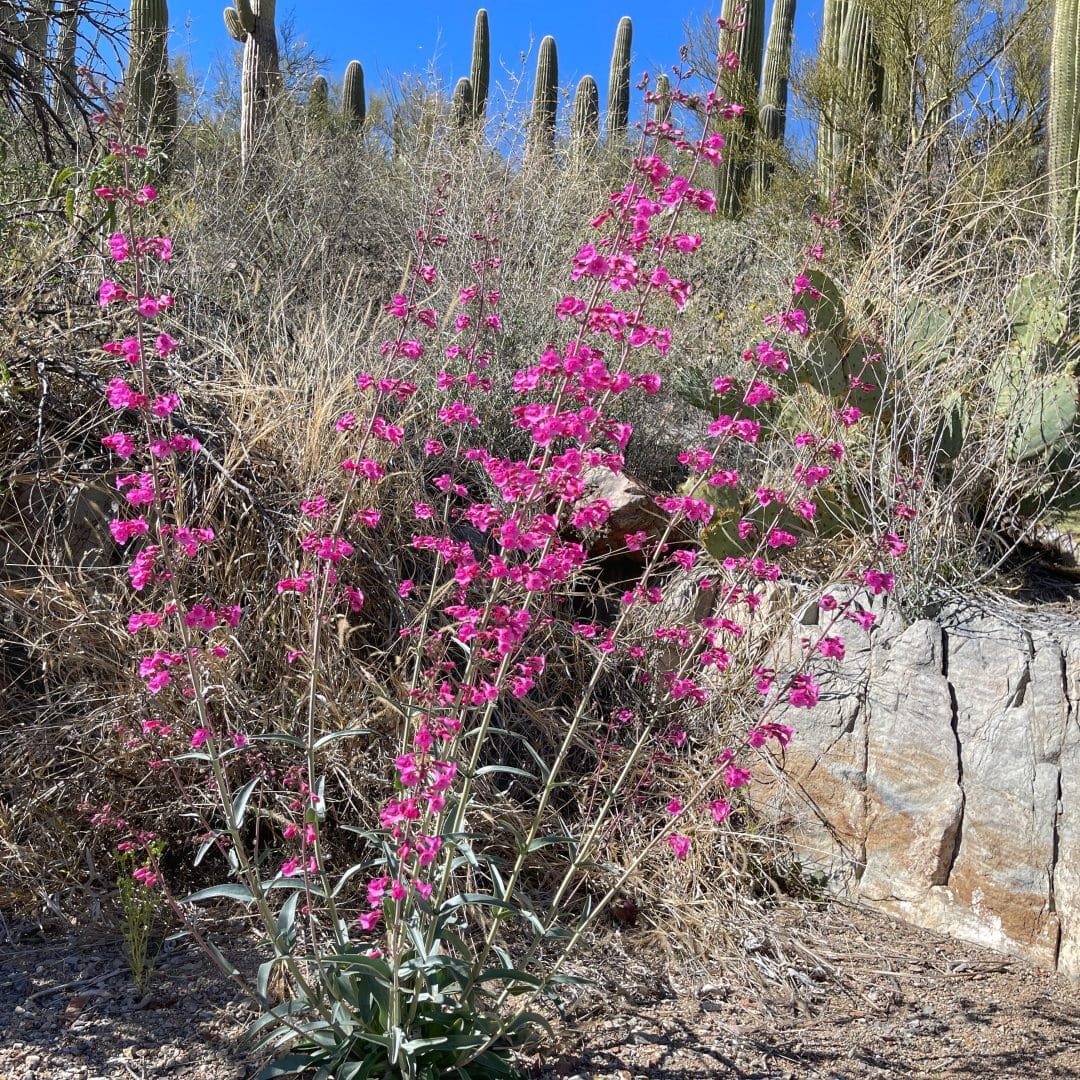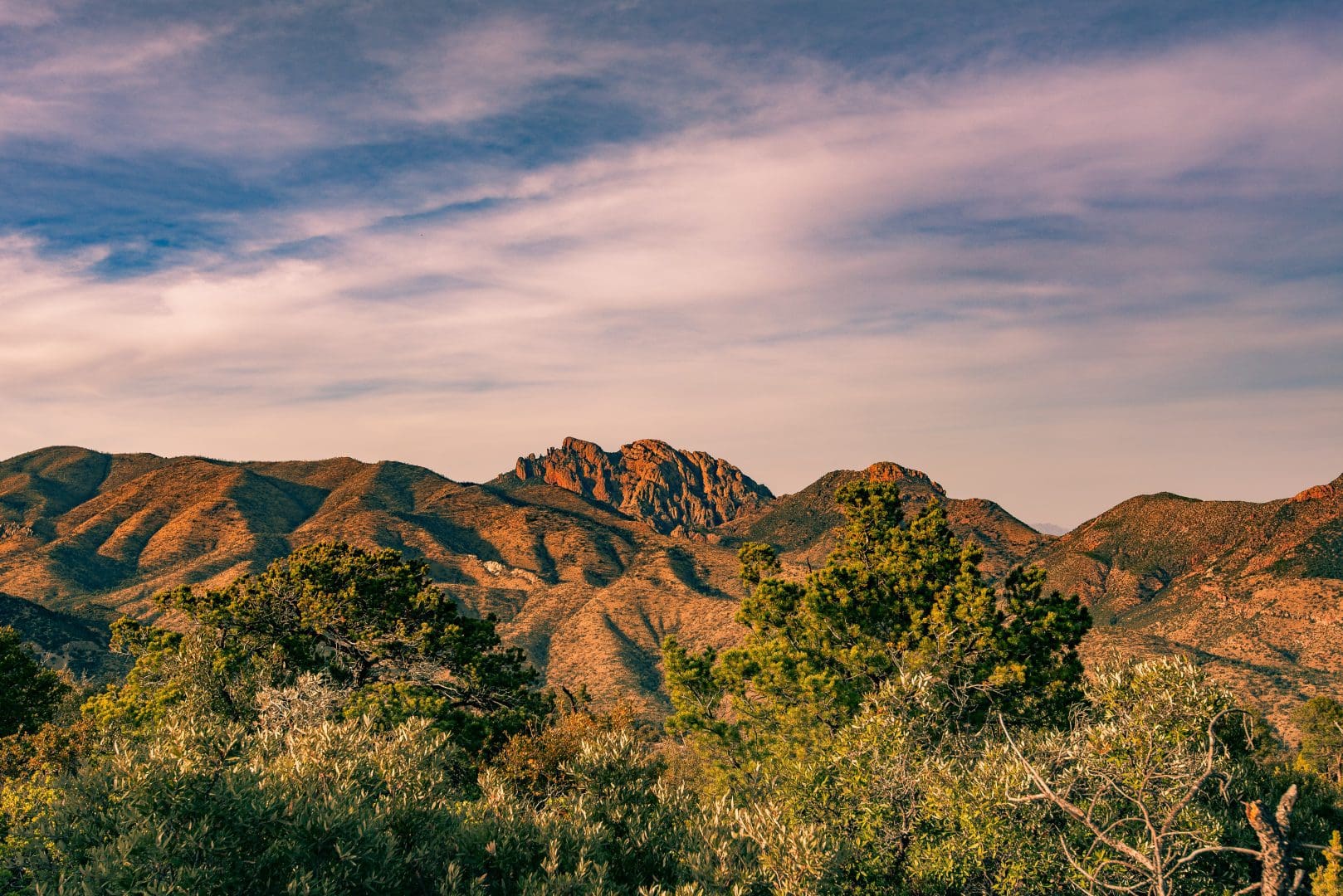
American West Monthly: Chiricahua National Monument
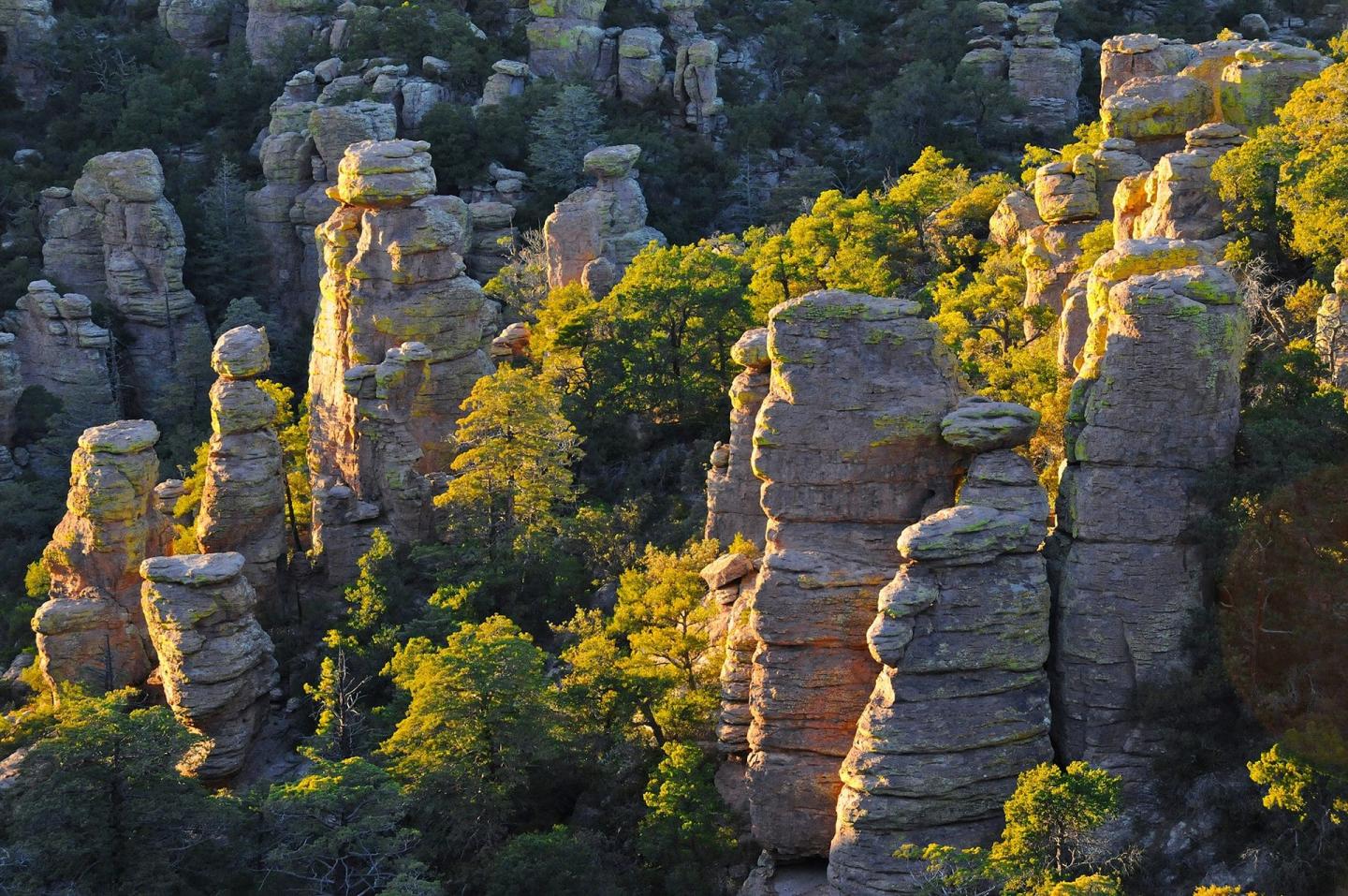
A Park with Many Stories to Tell
Chiricahua National Monument encompasses more than 12 thousand square feet of land in what is now southeast Arizona. It has been a source of food and water for Indigenous peoples dating back more than 12 thousand years. More recently, it was the homeland of the Chiricahua Apache, though this was not the name they used for themselves. The people referred to themselves with variants of the word “nde,” which means “people.” It was the Chiricahua Apache who aptly called this geologically spectacular gathering of towering rhyolite spires the “Land of Standing Up Rocks.” They lived and thrived in the lands in the southeastern region of what is now called Arizona prior to the arrival of the Spanish. Battling first the Spanish for their homeland, then the newly formed Mexican government, and finally the US government after the treaty of Guadalupe-Hidalgo, the Chiricahua were ultimately forced from their home.
Today, the park helps tell the story of these wars and the lasting impact they had on the Chiricahua Apache. The towering spires still stand and continue to inspire all who experience them, offering time and space for reflection and respect for the peoples who once lived here. This year, Chiricahua National Monument celebrates their centennial anniversary and it remains a significant and beautiful park, providing visitors with opportunities to learn and grow while also connecting with some of the most naturally stunning landscapes in the nation.
Celebrate 100 Years of Chiricahua National Monument, by Kaylene Wright, Park Ranger, Chiricahua National Monument
On April 18, 1924, President Calvin Coolidge created Chiricahua National Monument to preserve and protect fascinating rock pinnacles found in the area. This year, the National Park Service (NPS) will celebrate 100 years of preservation, protection, and enjoyment. In addition to the spectacular geology that the park is most famous for, Chiricahua National Monument also boasts the incredible biodiversity of the southeast Arizona ‘Sky Islands’ and a remarkably dark night sky. Located on the homeland of the Chiricahua Apache, the monument also has many stories to tell.
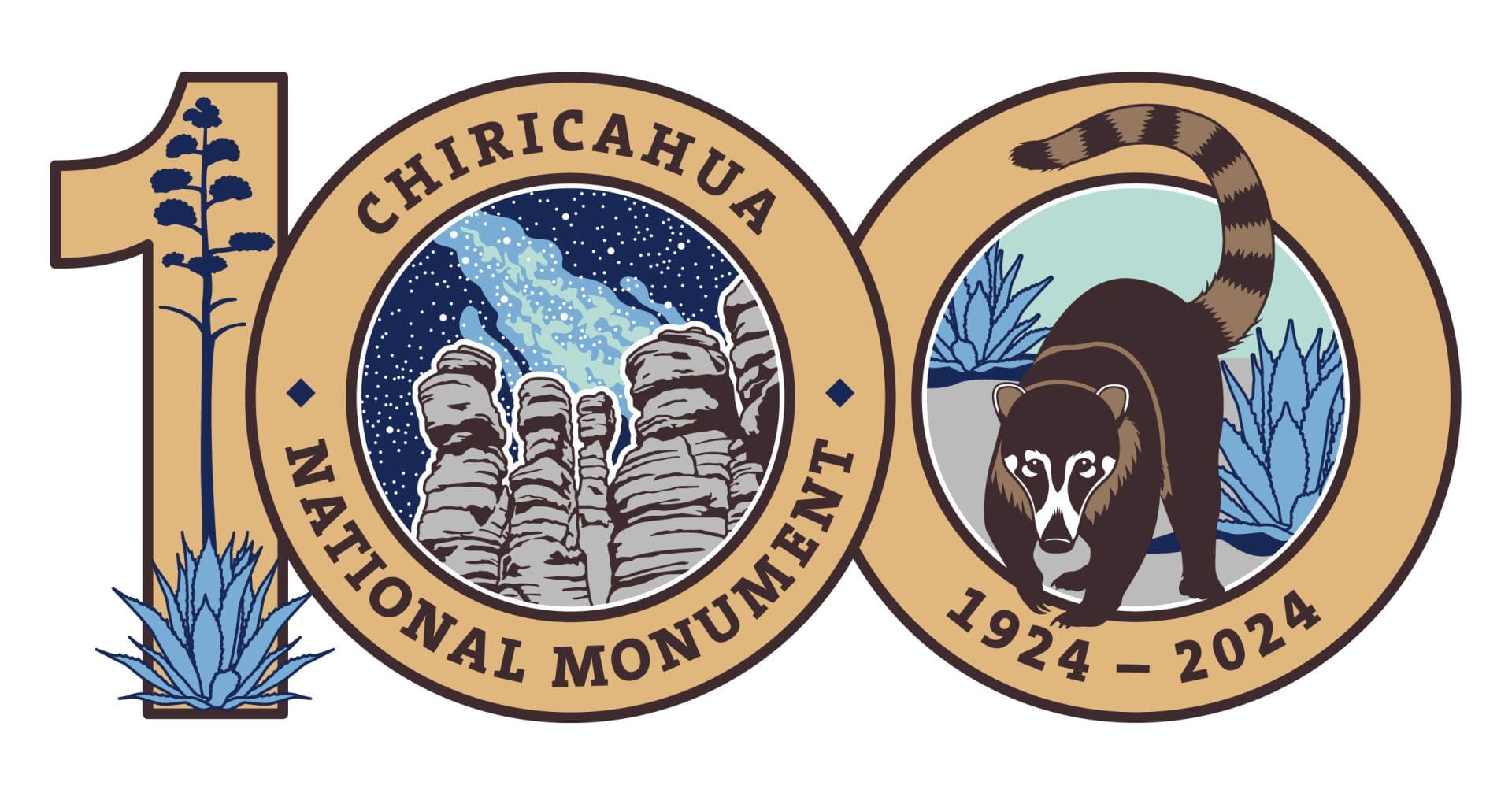
Celebrating 100 Years
This year, the NPS is hosting several events to celebrate 100 years of Chiricahua National Monument.
NPS will feature a Centennial Commemoration Ceremony on April 18, living history programs at Faraway Ranch on April 19, and several geology programs on April 20. Throughout the year there is a Centennial Junior Ranger insert and patch, Centennial Passport stamp, and merchandise featuring the Centennial logo in partnership with Western National Parks Association!
Visit go.nps.gov/chir100 to get the latest information on Centennial programs and events! For help planning a trip to Chiricahua National Monument, check out Visit Willcox and VisitArizona.
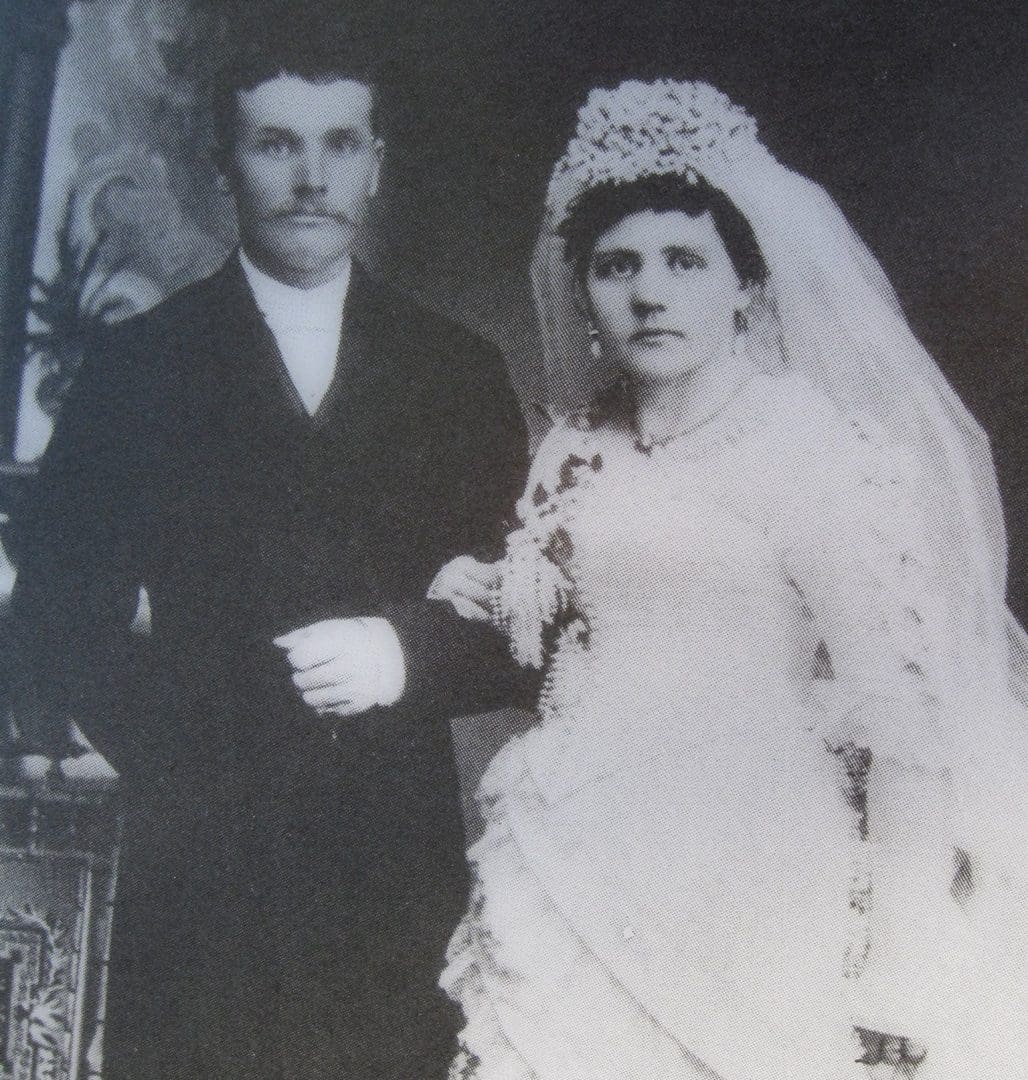
Looking Back Across a Century
As we reflect on 100 years, we remember how far we have come and how many visitors have enjoyed this wonderful place.
What was it like in 1924? Who was here, and what did they do? How did Chiricahua National Monument come to be?
The designation as a protected site was due to the advocacy of Lillian Erickson Riggs and her husband, Ed Riggs. Lillian, the daughter of Swedish immigrants Neil and Emma Erickson, managed Faraway Ranch. Faraway Ranch was a guest ranch in the present-day monument that was in service 1917-1970. It also served as a working cattle ranch during this time.
The history of Faraway Ranch is an important part of the history of Chiricahua National Monument. The story is one that is especially rooted in women’s history – the women of Faraway Ranch were people who often broke free of prescribed gender roles during their time. Lillian, her sister Hildegard, and her mother Emma all played important roles. Emma initiated the purchase of the original two-room cabin in 1886, Hildegard came up with the idea to start the guest ranch business in 1917, and Lillian oversaw the entire business. Lillian was blind and almost deaf but ran the guest ranch up until 1970.
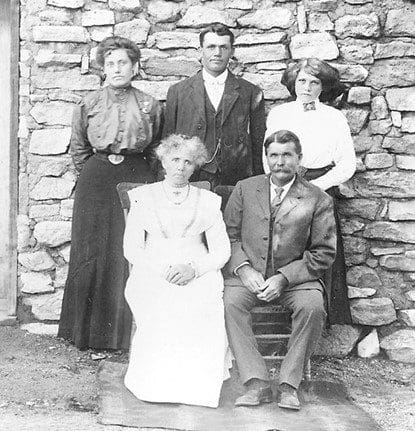
Faraway Ranch: A Page Out of Women’s History
The story of Faraway Ranch begins with Emma Peterson, more than 100 years ago.
Only 19 when she arrived in the United States, Emma Peterson came to the area when she was hired as a maid for soldiers at Fort Craig in New Mexico. It was there that she met fellow Swedish immigrant Neil Erickson, who was a soldier stationed there. Their relationship began in 1884. She refused his first marriage proposal because she wasn’t satisfied with his rank in the military, but eventually agreed and they married in 1887. By this point, Emma had changed locations to Fort Huachuca and later Fort Bowie while Neil worked in the field.
During her time at Fort Bowie, she began exploring the area. When she visited Bonita Canyon, the canyon that runs through Chiricahua National Monument, she fell in love. “She found the place and thought it was the most gorgeous spot she had ever seen,” Neil Erickson wrote for Hoof and Horn magazine in 1934. “Large oak trees lined the canyon, grass was three feet high wherever she walked, and Bonita Creek was then running like a full-sized river.” It became her dream to live there and raise a family. Emma then purchased a two-room cabin in Bonita Canyon, and Neil filed the paperwork to receive 160 acres of land around the cabin.
They had three children: Lillian in 1888, Ben in 1891, and Hildegard in 1895. Neil worked as a carpenter in the town of Bisbee to bring in income, and Emma took care of the ranch and children. Eventually, the Chiricahua Forest Reserve (now part of Coronado National Forest) was created in 1903, and Neil got to work from home. They began expanding and renovating the ranch house during the early 1900s.
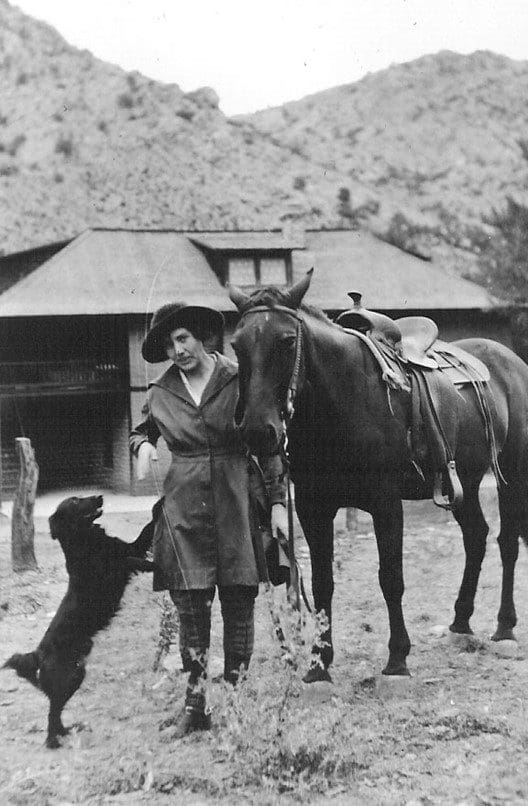
Toward a National Monument Designation
By 1917, care of the ranch had fallen to their daughters.
Lillian was working as a teacher in Bowie when Hildegard began boarding visitors at the ranch. She came up with the idea to create a guest ranch business, and Lillian quit teaching to assist. Hildegard married in 1920 and moved out, but Lillian stayed, continuing the work. She soon began seeing Ed Riggs, a childhood friend of hers. The couple married in 1923.
Lillian and Ed began exploring the area in depth and, just as visitors to this day are, were amazed by the beauty of the unique rock formations. They took photographs of the area and sent them to fairs and local towns to advertise what they called the “Wonderland of Rocks.” It was at this point that they began advocating for creation of a national monument to protect the area.
The Antiquities Act of 1906 allows the president to set aside areas of “historic or scientific interest” as national monuments. Several national monuments already existed in the Southwest, including Casa Grande, Chaco Canyon, and Tumacácori. The governor of Arizona, George W. P. Hunt, visited the area in 1923 to see what there was to offer. He immediately supported the creation of a national monument, and in 1924, President Calvin Coolidge signed legislation creating Chiricahua National Monument.
The status as a national monument not only served to preserve and protect the park resources, but was also good for the guest ranch business. Visitors began coming from across the country to stay at the ranch, explore the area on horseback, and take in the beauty of Bonita Canyon. At this point, the tourism industry was very closely related to the National Park Service. Faraway Ranch was the only facility in the area that offered food and lodging to visitors. It offered a rustic, ‘wild west’ type stay, but also had modern comforts. “Although life at Faraway Ranch is a thing apart from the hurry of city life,” Lillian told visitors, “it keeps in touch with the world’s doings by means of the radio and current periodicals.” The ranch had electricity, running water, two indoor bathrooms, and even a swimming pool!
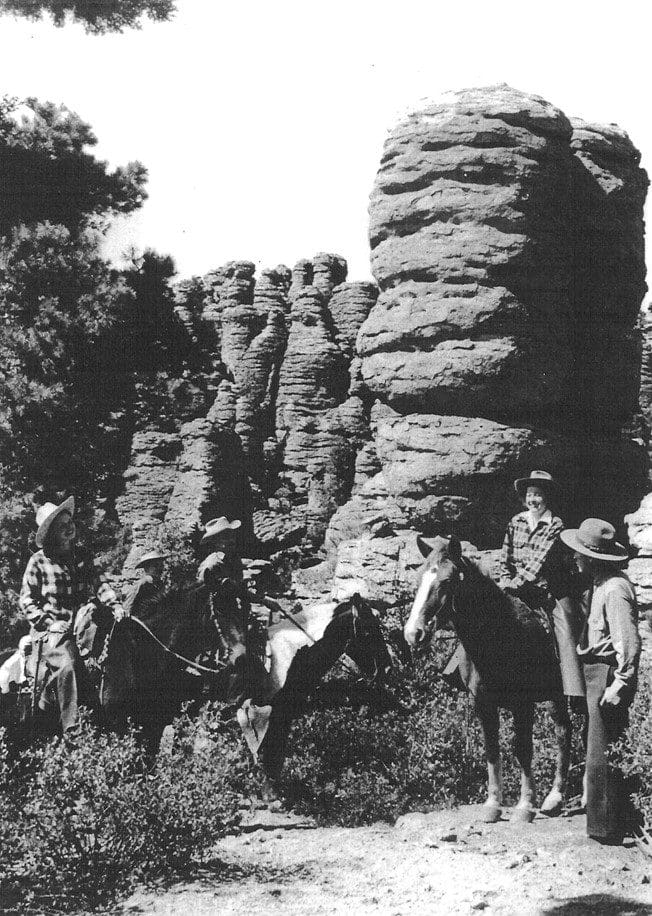
A Feat of Engineering Creates Campgrounds, Trails, and Horseback Paths
Today, Echo Canyon Trail is still the most popular and famous path in Chiricahua National Monument.
In the 1930s, Ed began work as a foreman for the Civilian Conservation Corps (CCC). The CCC, which employed young men during the Great Depression, had a huge presence in national parks and monuments throughout the country. Chiricahua was no exception – the men under Ed’s lead created all of the trails in the park, Bonita Canyon Drive, the campground, and several buildings in the monument today. Ed’s expertise and familiarity with the area made him a natural leader for the task. Even his gravestone marks one of his proudest accomplishments: “He engineered the construction of Echo Trail. He wished this to be his monument.” Today, Echo Canyon Trail is still the most popular and famous path in Chiricahua National Monument.
Horseback quickly became one of the most popular ways for visitors to enjoy the monument. Frank Pinkley, the Superintendent of Southwestern National Monuments, stated:
“We will naturally do all we can to make [horseback tours] a success, because so many visitors come unprepared for walking or unable to walk and thus miss some of the finest formations. Chiricahua is an ideal horseback monument and the visitor can enjoy from an hour or two to a full day in the saddle.”
Horseback riding is still available as an option for exploring the park!
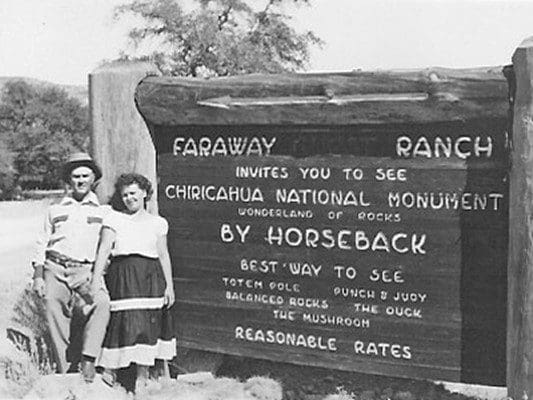
Faraway Ranch Keeps Lillian’s Memory Alive
Lillian officially closed Faraway Ranch in 1970.
In 1942, Lillian lost her eyesight and was already mostly deaf. She had come to rely on Ed quite a bit, but his death in 1950 dealt a big blow. Her mother, Emma, also died the same year. Lillian went into a depression for about nine years afterward as evidenced by her journals. Nevertheless, she continued to run the ranch. She hired help and would intentionally overpay staff on their first paycheck to see if they would come forward and be trustworthy. She was a difficult boss and had difficulty keeping employees long term, but a ranch foreman and friend, J.P. (Andy) Anderson, stayed around and helped her run the ranch throughout the 1960s.
Lillian officially closed Faraway Ranch in 1970. She stayed living there until 1973, when she had a series of debilitating heart attacks. She moved into a nursing home in Willcox for her final years and passed away in 1977 at the age of 89. “Lillian Riggs was a timeless person,” a friend of hers wrote in a newspaper. “She was fearless, independent, and stubborn. And what an asset that trait can be to someone with her handicaps. She may have looked small and frail, but she was steel. There were times when some might have thought her demanding, but she never expected more of others than she did of herself.”
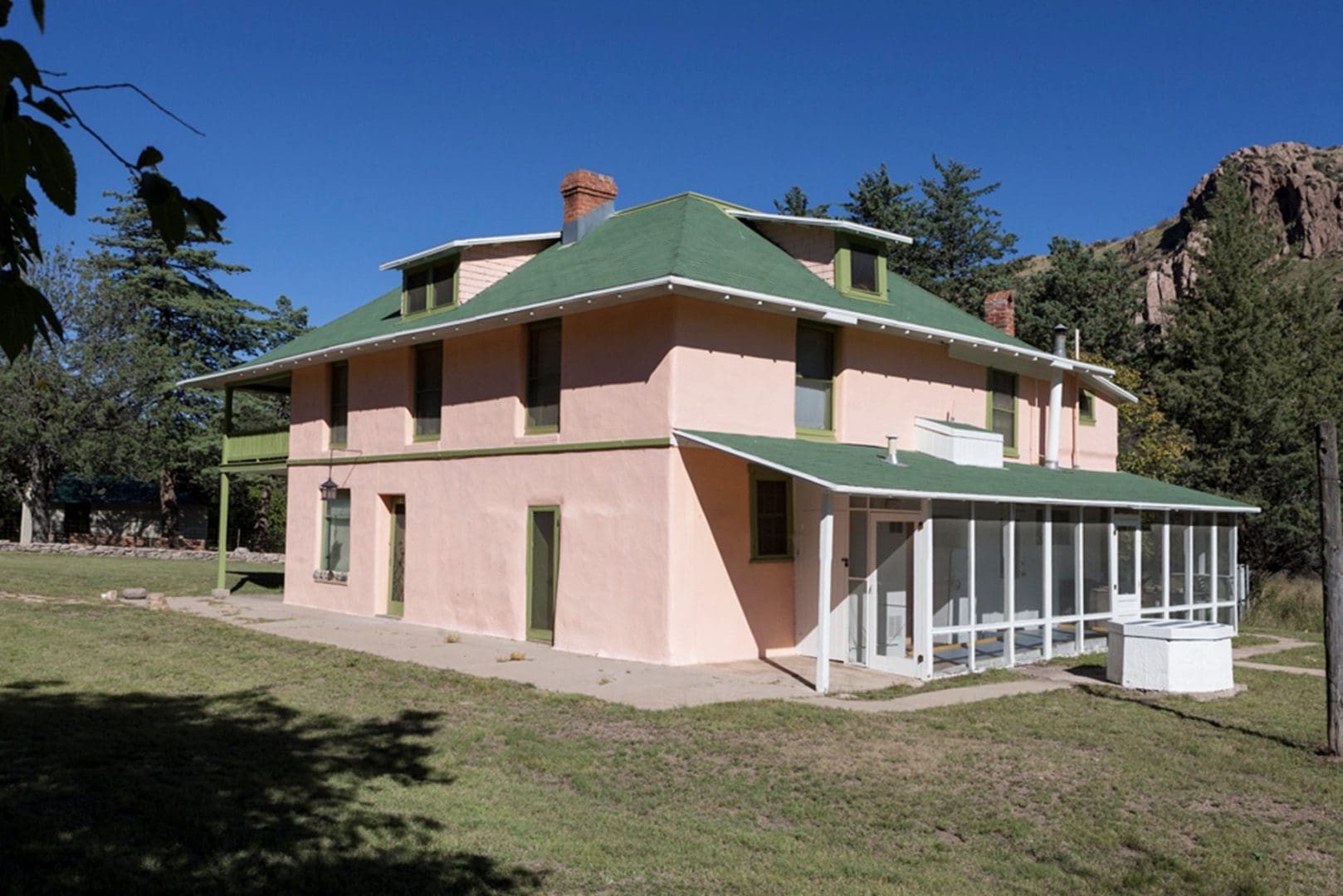
What Would Happen to Faraway Ranch?
As Chiricahua National Monument celebrates 100 years, we continue to share the story of the Erickson-Riggs women and their role in protecting this area.
Both Ben and Hildegard died the next year, leaving a big question: What would happen to Faraway Ranch? Eventually Ethel, Ben’s widow, decided to sell Faraway Ranch to the National Park Service. At this point the ranch grounds were surrounded by Chiricahua National Monument. In 1979, Congress passed a law authorizing the expansion of the monument to include all of Faraway Ranch. Furniture and artifacts remained in the house and were carefully recorded and catalogued. The park service worked to get the buildings up to code. In 1988 the park service began offering tours of Faraway Ranch, the year that Lillian would have turned 100.
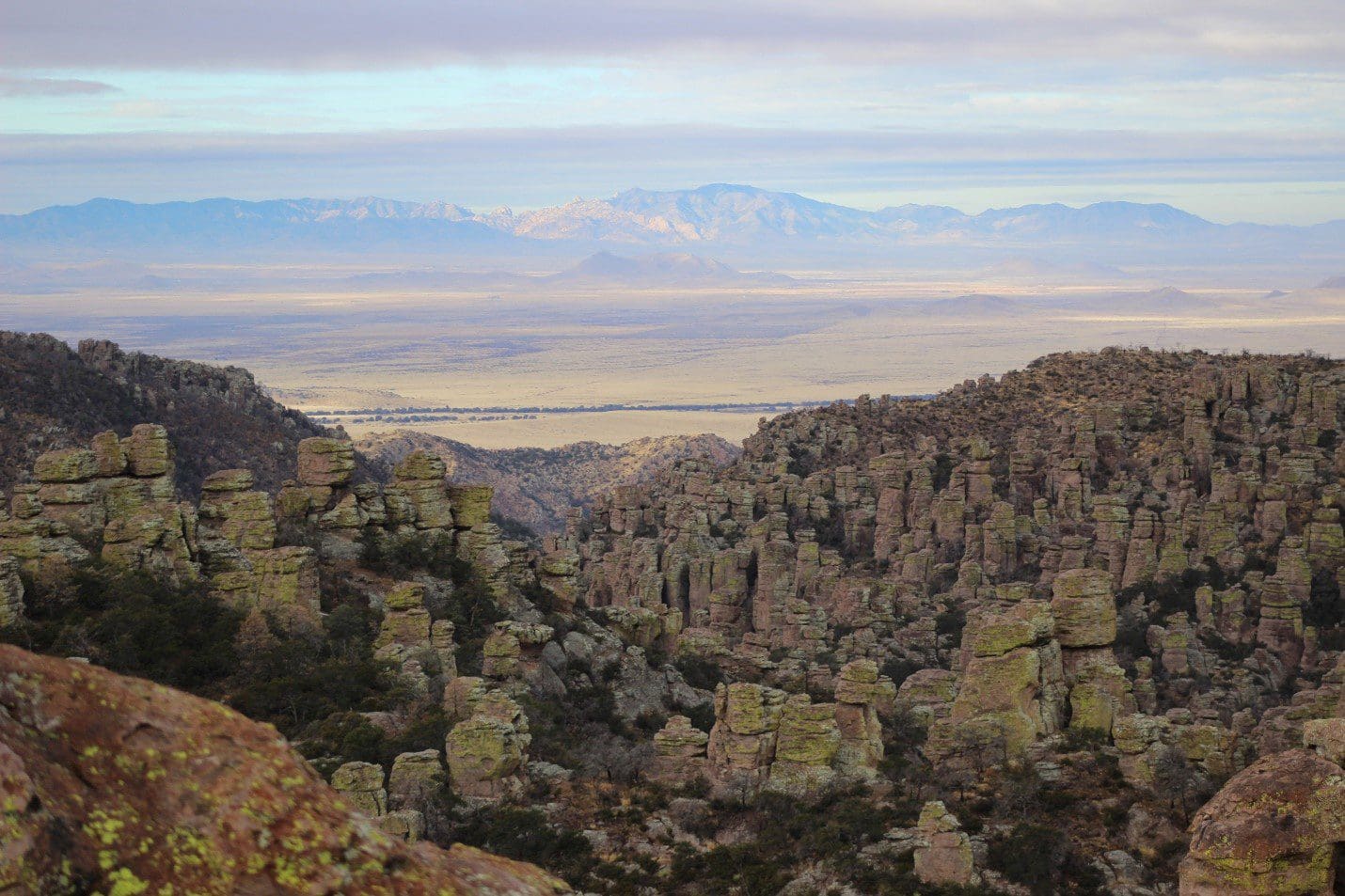
Visit Chiricahua National Monument and Celebrate 100 Years of Extraordinary History
Today, visitors to Chiricahua National Monument have several different things that they can do and see. Bonita Canyon Scenic Drive meanders eight miles from the park entrance to Massai Point, the end of the road. This is the iconic spot where visitors can see panoramic views of hundreds of unique, beautiful, almost human-like rock pinnacles. Over 17 miles of hiking trails give visitors the option to wander on trails ranging from easy, paved strolls to all-day treks in the wilderness. Bonita Canyon Campground provides a spot to spend the night and enjoy some of the darkest night skies. Park rangers give programs on a variety of park topics and the visitor center offers exhibits and a park movie.
Visit go.nps.gov/chir100 to get the latest information on Centennial programs and events!
By Kaylene Wright, Park Ranger, Chiricahua National Monument
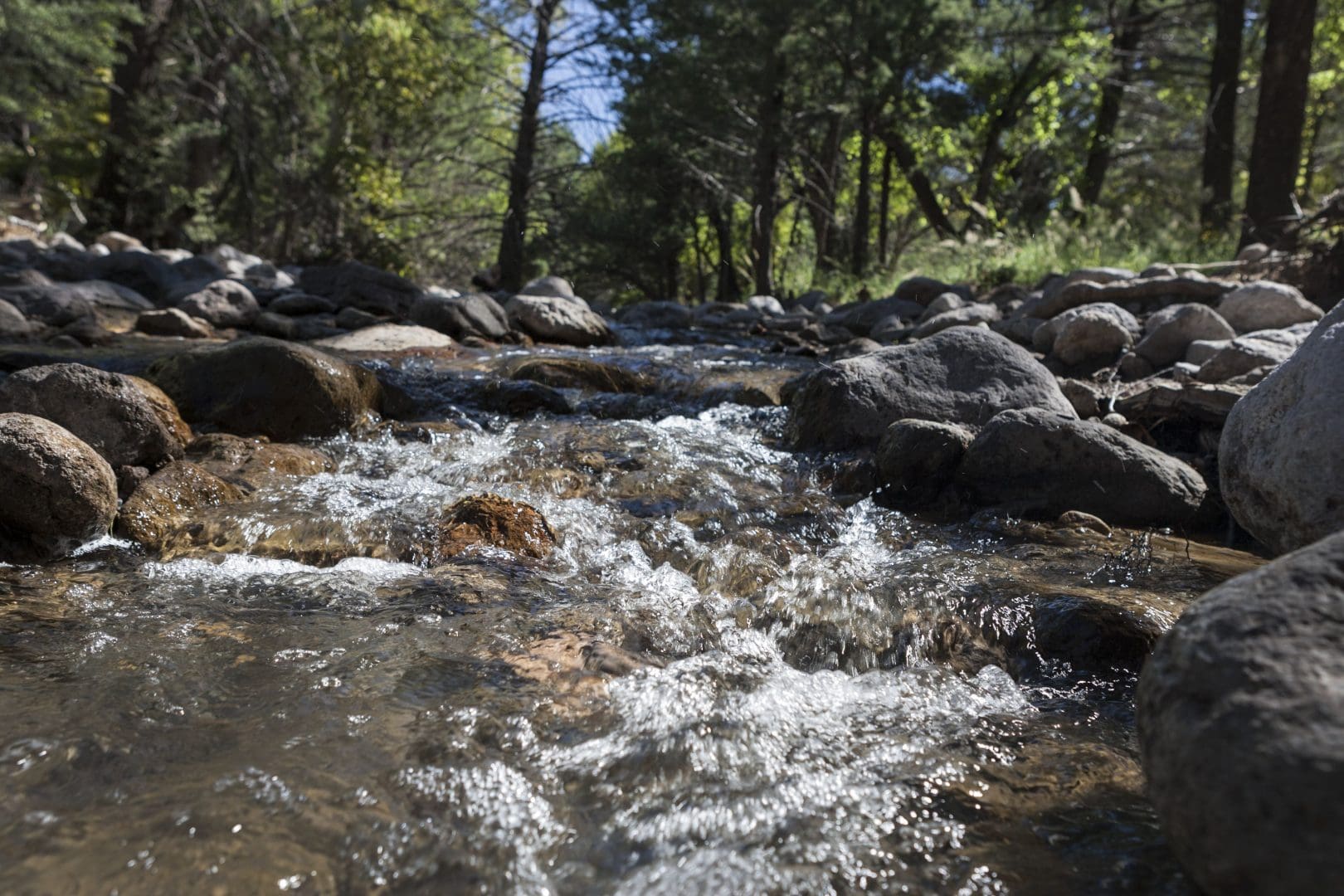
Want to show your love and support for these incredible lands?
Shop WNPA’s collection of apparel, books, collectibles, and more!



